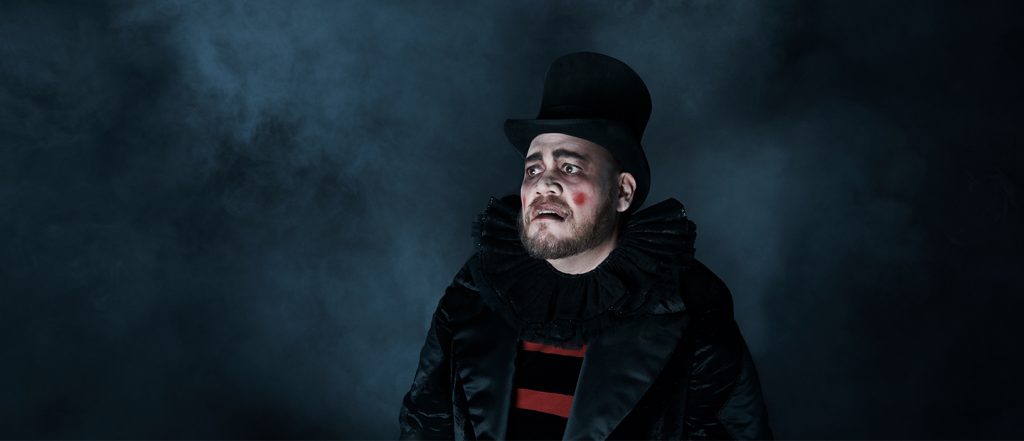
Rigoletto was Verdi’s “Eroica,” marking the beginning of the composer’s middle period and clearly surpassing in originality and achievement all of his previous work. At its 1851 premiere and throughout the ensuing 13-performance run at Venice’s Teatro La Fenice, Rigoletto was an enormous success, and it traveled quickly from there. By 1855, the opera had been produced throughout Italy, across Europe, andas far afield as New York, Havana, and Montevideo, Uruguay. This international success, combined with the premieres of Il Trovatore and La Traviata which followed close on Rigoletto’s heels in 1853—put to rest any remaining doubt regarding Verdi’s operatic primacy. But despite Rigoletto’s eventual success, it was very nearly killed before its birth, needing something of a political miracle just to see the light of day.
After receiving the commission from La Fenice, Verdi—an ardent humanist, democrat, and patriot who longed for Italy to be free from the autocratic rule of France and Austria—turned to an uncomfortable source of inspiration: a play by Victor Hugo called Le Roi s’Amuse (The King Amuses Himself ). Scathing and bleak, it centers on the amorous exploits of the historical French king François I and the downfall of his physically deformed and morally corrupt jester Triboulet, who encourages and makes light of the king’s lechery. The hunchbacked antihero ultimately reaps the poisonous crop he has sown when François discovers and rapes his sheltered daughter, whom he has hidden away from the corruption of the court. Worse yet, in a botched attempt to arrange the king’s murder in revenge, Triboulet causes instead the death of his own daughter.
Naturally, Austrian censors (who had jurisdiction over northern Italy, most of which was a province of the Habsburg Empire at the time) were not impressed with Verdi and librettist Francesco Maria Piave’s work. Three months before the scheduled premiere, the administration of La Fenice received a letter from the authorities expressing the regional governor’s disappointment that Verdi and Piave “should not have chosen a more worthy vehicle to display their talents than the revolting immorality and obscene triviality of La Maledizione [The Curse, Rigoletto’s original title].” The letter communicated that any performance of the opera was absolutely forbidden and instructed that no one’s time be wasted with protestations or appeals. Luckily, this last directive was ignored, and after extensive revisions to the work’s setting and its characters’ identities—the scene moved from the French court to Mantua, King François became the local duke, Triboulet became Rigoletto, and so on—the newly titled Rigoletto won its approval for performance from a censor who, by a crucial twist of fate, was an opera lover and an admirer of Verdi’s work.
Though the play’s political bent surely played its part in attracting Verdi’s attention, it was the emotional, psychological, and narrative power of Le Rois’ Amuse, and the depth and inherent contradiction of Triboulet’s character, that most appealed to Verdi, an intensely intellectual and extremely well-read man for whom literature, poetry, and drama held as much significance as music. (The collection of authors on whose work he based his operas reads like a crosssection of history’s great writers: Hugo, Byron, Schiller, Voltaire, and most of all, Shakespeare, a formative influence and continual source of inspiration for Verdi, who claimed to have read and re-read the playwright’s works since childhood.) It is therefore hard to overestimate the composer’s level of admiration for Hugo’s play, which he described in a letter to Piave as “one of the greatest creations of modern theatre. The story is great, immense, and includes a character who is one of the greatest creations that the theatres of all nations and all times will boast… Triboulet is a creation worthy of Shakespeare.”
Excerpt from Jay Goodwin’s Program Note in the January 29, 2022 production of Rigoletto.





